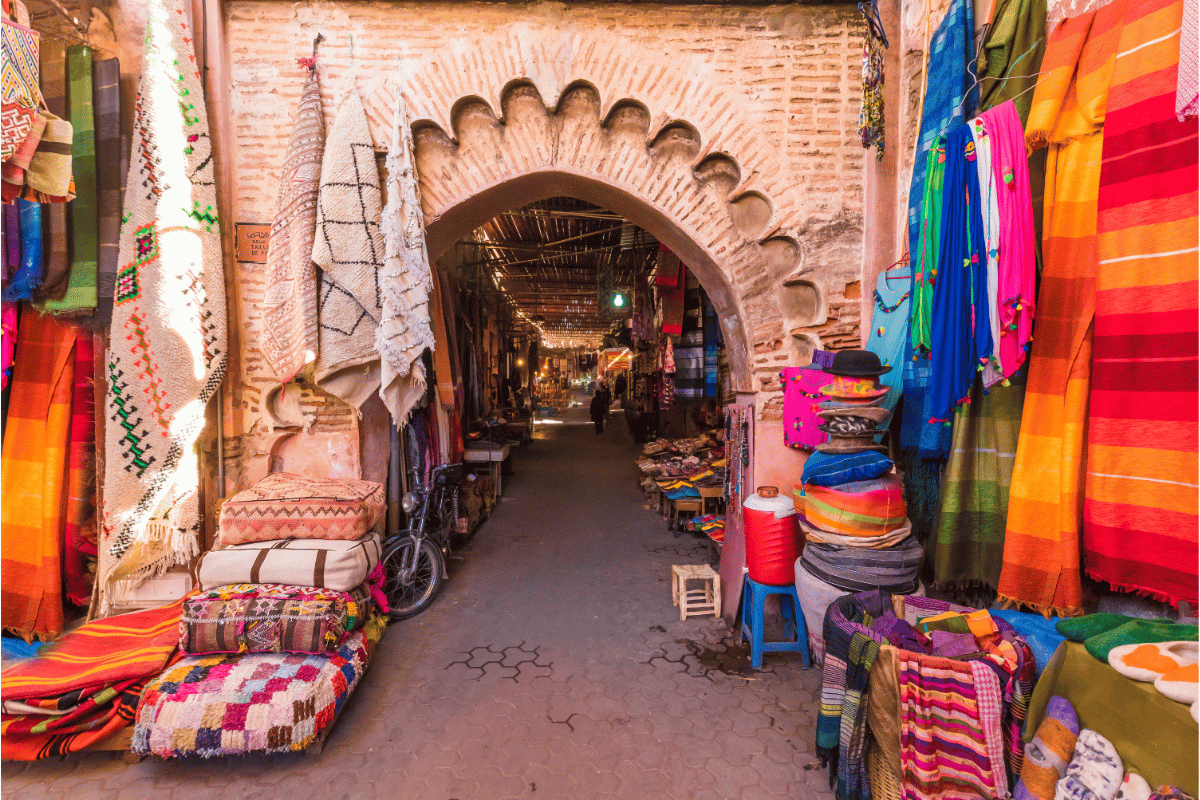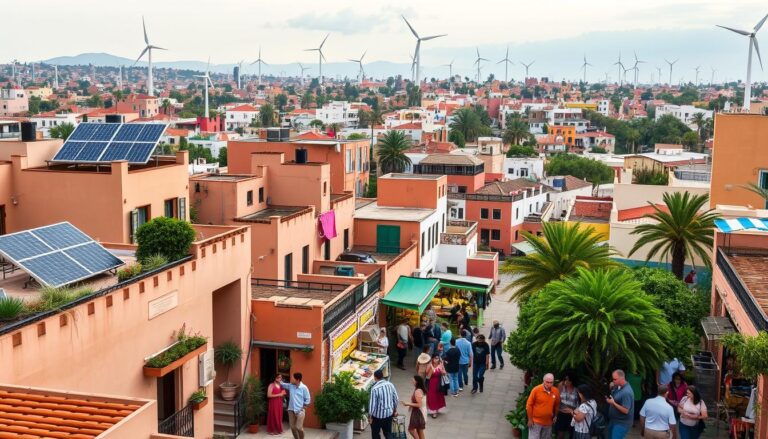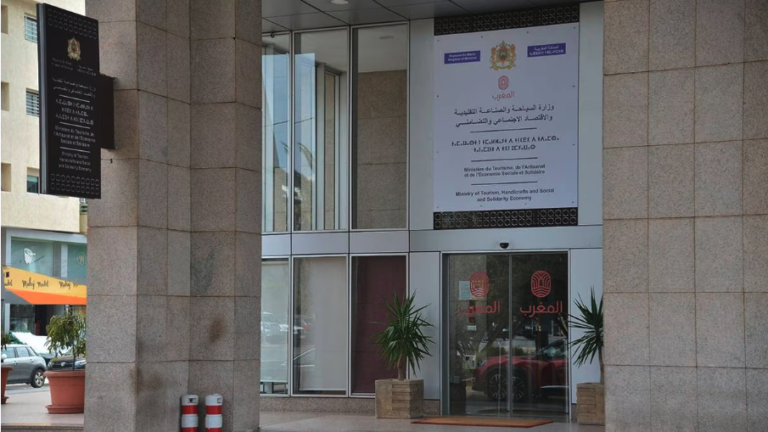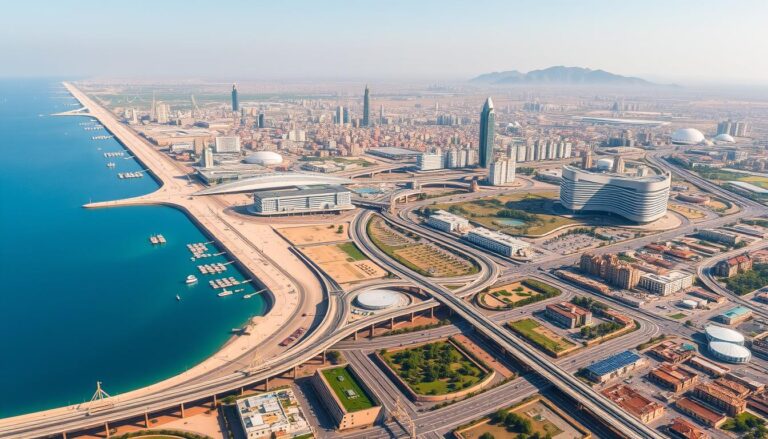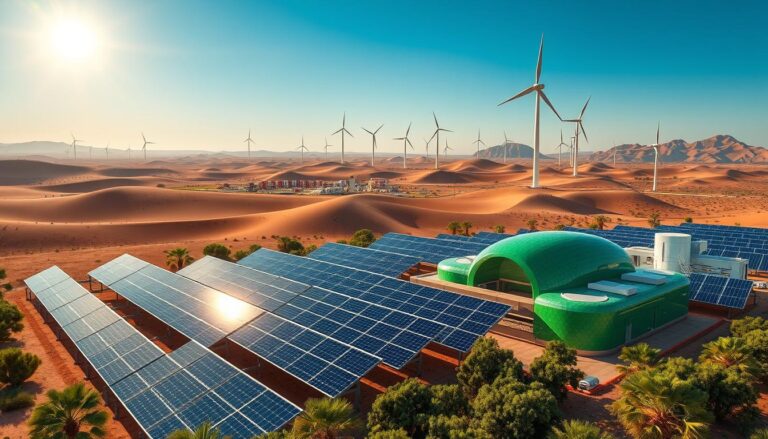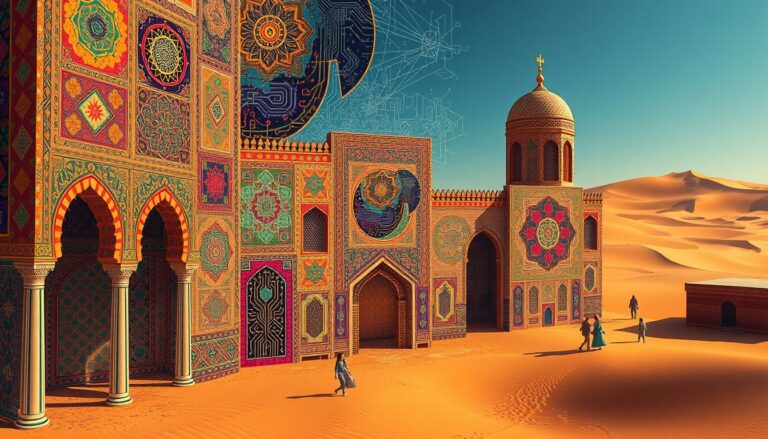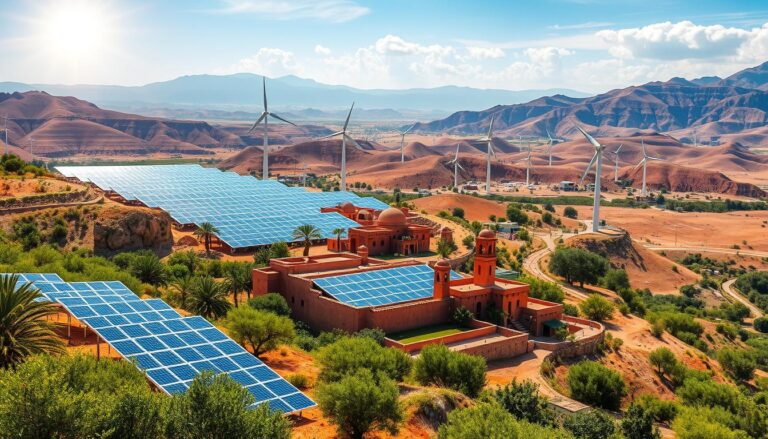The Textile Industry in Morocco has a rich history, with weaving techniques and production dating back centuries.
In recent years, this industry has experienced tremendous success, thanks to government support and strategic initiatives. Located at the crossroads of Europe, Africa, and the Middle East, Morocco has become a key player in the global textile trade.
With government support and initiatives aimed at promoting the textile industry, Morocco has seen a significant increase in its production capacity. The government has implemented various measures to attract foreign investment and create opportunities for local businesses. These efforts have resulted in the establishment of state-of-the-art manufacturing facilities and an influx of skilled workers into the industry.
Furthermore, Morocco’s strategic location has played a crucial role in its success as a textile hub. Its proximity to major markets such as Europe provides easy access to customers and suppliers alike. This geographical advantage allows for efficient supply chain management, reducing costs and ensuring timely delivery of products.
Overall, the textile industry in Morocco is not only contributing to economic development but also creating employment opportunities for thousands of people. With increased production capacity and government support, this sector shows no signs of slowing down. Stay tuned as we delve deeper into the various aspects that have contributed to this tale of success in Moroccan textiles.
Key Takeaways
- Government support and strategic initiatives have led to the success of the textile industry in Morocco.
- Morocco’s strategic location and strong trade ties have contributed to its position as a textile hub.
- Incentives such as tax breaks and financial assistance attract both local and international investors.
- The textile industry has had a positive socioeconomic impact, including job creation, increased incomes, and improved living standards.
Rich History of Textile Production in Morocco
Now, let me take you on a journey through Morocco’s rich history of textile production.
Moroccan textile traditions date back centuries and hold significant cultural significance in the country. The art of weaving has been passed down from generation to generation, with techniques and patterns deeply rooted in Moroccan heritage.
Textiles play a central role in Moroccan culture, symbolizing wealth, status, and tradition.
Morocco’s rich history of textile production can be traced back to ancient times when various civilizations inhabited the region. From Phoenicians to Romans, each civilization left its mark on the textile industry, introducing new materials and techniques. However, it was during the Islamic period that Moroccan textiles flourished. Intricate designs featuring geometric patterns, calligraphy, and floral motifs became prominent.
The craftsmanship involved in creating these textiles is truly remarkable. Skilled artisans carefully weave threads by hand using traditional looms inherited from their ancestors. Natural fibers such as silk, wool, and cotton are commonly used along with vibrant dyes obtained from local plants and minerals. The result is a tapestry of colors and textures that reflect Morocco’s diverse landscapes.
As we transition into the subsequent section about government support and initiatives for the textile industry in Morocco without skipping a beat, it is important to acknowledge how this rich history has laid the foundation for present-day success.
Government initiatives have aimed at preserving traditional techniques while also promoting innovation within the industry. These efforts have not only helped sustain local craftsmanship but also fostered economic growth through exports of Moroccan textiles worldwide.
Government Support and Initiatives
If you’re interested in the textile industry in Morocco, you’ll be pleased to know that the government has implemented various incentives to attract both local and international investors.
These incentives include tax breaks, financial assistance, and streamlined bureaucratic processes.
Additionally, the government is actively promoting the establishment of textile factories as a means of job creation and economic growth.
Incentives for Local and International Investors
Moreover, the textile industry in Morocco offers attractive incentives for both local and international investors, paving the way for a flourishing business environment. This sector provides numerous opportunities for foreign investors seeking to establish their presence in Morocco.
The government has implemented various measures to encourage foreign investment, including tax exemptions and reduced customs duties on imported machinery and raw materials. Additionally, there are special economic zones that offer preferential treatment to investors, such as streamlined administrative procedures and access to infrastructure facilities. These incentives not only attract foreign capital but also promote technology transfer and knowledge exchange between international companies and local businesses.
Furthermore, the textile industry in Morocco presents lucrative investment opportunities for local entrepreneurs as well. The government has prioritized the development of this sector by providing financial support programs and grants specifically tailored for domestic businesses. Local investors can benefit from favorable loan conditions with low interest rates and extended repayment periods. Moreover, they have access to training programs aimed at enhancing their skills in textile production techniques and management strategies.
By encouraging local investment, Morocco aims to strengthen its economy by creating job opportunities for its citizens while nurturing a competitive textile market.
Transitioning into the subsequent section about ‘promotion of textile factories and job creation’, it is essential to highlight how these incentives contribute towards achieving this goal without explicitly stating ‘step’.
Promotion of Textile Factories and Job Creation
Additionally, the government’s support programs and incentives play a crucial role in promoting the growth of the textile industry in Morocco. These strategies not only attract both local and international investors but also lead to the establishment of new textile factories across the country.
The government provides various incentives such as tax breaks, financial assistance, and streamlined administrative procedures to encourage investment in this sector. As a result, textile factories are being set up at an increasing rate, creating job opportunities for the local population.
The promotion strategies implemented by the government focus not only on attracting investors but also on developing a thriving job market within the textile industry. By providing training programs and partnering with educational institutions, they ensure that there is a skilled workforce available to meet the demands of these factories. Moreover, they actively promote job opportunities through career fairs and networking events to connect potential employees with employers in this field.
This comprehensive approach helps in maximizing employment opportunities within the industry while ensuring sustainable growth.
Transitioning into the subsequent section about ‘strategic location for textile trade,’ it is clear that Morocco’s efforts towards promoting its textile factories and creating a robust job market have led to significant success. However, these achievements are further enhanced by Morocco’s strategic location that facilitates seamless trade with both European and African markets.
Strategic Location for Textile Trade
Situated at the crossroads of Africa, Europe, and the Middle East, Morocco’s strategic location has played a pivotal role in its success as a textile trade hub. The country’s proximity to major markets and transportation routes has allowed it to forge strategic partnerships with international textile companies. These partnerships have helped Morocco stay abreast of global market trends and ensure its products are competitive on the international stage.
Morocco’s favorable location provides easy access to key markets such as Europe, which is one of the largest consumers of textiles globally. With shorter shipping distances and lower transportation costs compared to other textile-producing countries, Moroccan textile factories enjoy a competitive advantage in terms of speed and cost-efficiency. This advantage allows them to respond quickly to changing market demands and maintain their position in the global textile trade.
In addition to its geographical advantages, Morocco has also leveraged its strategic location to establish strong trade ties with neighboring countries in Africa and the Middle East. By capitalizing on these regional connections, Moroccan textile manufacturers have been able to expand their reach into new markets and diversify their customer base. This not only strengthens their position within the industry but also contributes significantly to job creation and economic growth in the country.
As Morocco continues to build on its success as a textile trade hub, increasing production capacity becomes essential for meeting growing demand. With an eye towards future opportunities, Moroccan authorities are actively investing in infrastructure improvements and technology upgrades that will enable local factories to scale up production while maintaining high-quality standards. By doing so, they aim not only to meet current market demands but also secure a sustainable future for Morocco’s thriving textile industry.
Transitioning into the subsequent section about ‘increasing production capacity,’ these strategic investments will lay a solid foundation for further growth by enhancing efficiency and competitiveness within Moroccan textile factories.
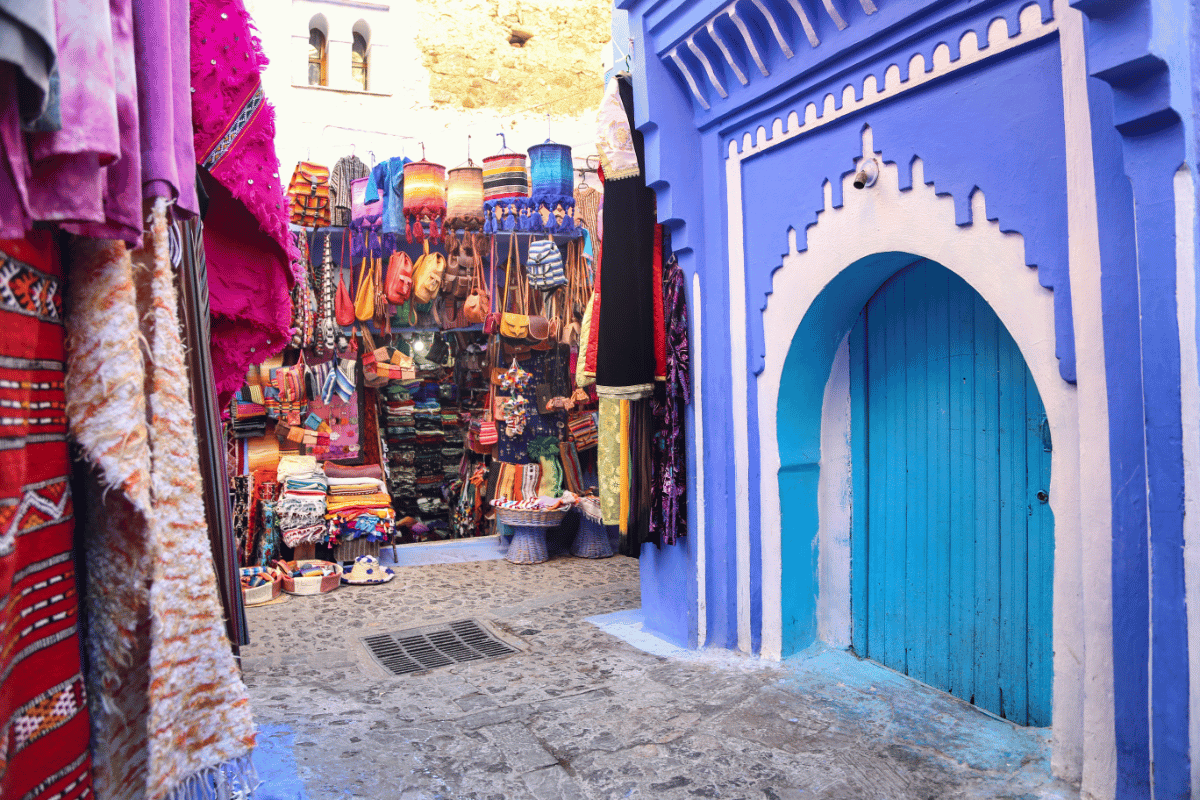
Increasing Production Capacity
When it comes to increasing production capacity in the textile industry, there are three key points to consider.
Firstly, modern technology and innovation play a crucial role in enhancing efficiency and output.
Secondly, having a skilled workforce is essential as they can effectively operate the advanced machinery and contribute to quality production.
Lastly, implementing training programs can further enhance the skills of workers, ensuring they stay up-to-date with industry standards and practices.
These factors combined can lead to significant improvements in production capacity within the textile industry.
Modern Technology and Innovation
Morocco’s textile industry has revolutionized with cutting-edge technology and mind-blowing innovations. This transformation has paved the way for the development of smart textiles, marking a significant milestone in the industry.
By integrating advanced technologies into their production processes, Moroccan textile manufacturers have been able to create fabrics that can monitor vital signs, regulate body temperature, and even charge electronic devices. These smart textiles not only offer enhanced functionality but also provide an opportunity for sustainable practices within the industry.
With sustainability measures becoming increasingly important worldwide, Moroccan textile companies have embraced eco-friendly materials and manufacturing techniques to reduce their environmental impact.
In addition to smart textiles, the adoption of modern technology has led to various innovation initiatives in Morocco’s textile industry. Manufacturers are now utilizing state-of-the-art machinery that improves efficiency and productivity while reducing manual labor. Automated systems enable accurate fabric cutting and precise stitching, resulting in higher quality products at a faster pace. Furthermore, digital design software allows for intricate patterns and designs to be created with ease, offering endless creative possibilities.
These technological advancements have not only transformed production processes but have also opened doors for greater customization options for customers.
Transitioning seamlessly into the subsequent section about skilled workforce and training programs, these technological advancements in Morocco’s textile industry have necessitated a highly skilled workforce capable of operating and maintaining modern machinery. To keep up with this fast-paced innovation cycle, numerous training programs have been implemented across the country to equip workers with the necessary skills required by this evolving sector.
By investing in human capital through comprehensive training programs, Morocco ensures that its textile industry remains at the forefront of technology-driven developments while fostering economic growth and creating employment opportunities for its citizens.
Skilled Workforce and Training Programs
With the demand for highly trained workers on the rise, training programs in Morocco have been instrumental in equipping individuals with the skills needed to excel in the ever-evolving textile field. These programs focus on developing a skilled workforce through vocational training that prepares individuals for various roles within the industry. By providing hands-on experience and theoretical knowledge, these programs ensure that workers are equipped with the necessary expertise to meet the demands of a rapidly changing sector.
To highlight the impact of these training programs, it is essential to understand their effectiveness and outcomes. The following table provides an overview of some key aspects:
| Training Program | Duration | Curriculum |
|---|---|---|
| Technical Skills | 6 months – 1 year | Machine operation, quality control, maintenance |
| Design | 9 months | Textile design principles and software skills |
| Management | 1 year | Business administration, supply chain management |
These programs not only foster technical proficiency but also nurture creativity and critical thinking among participants. They play a crucial role in bridging the gap between educational institutions and industry requirements by offering practical knowledge tailored to specific job roles. As a result, trainees are well-prepared to contribute meaningfully to textile production processes.
Transitioning into how this skilled workforce contributes to economic development, it is evident that these training programs have laid a solid foundation for growth within Morocco’s textile industry.
Contribution to Economic Development
In this discussion, we’ll explore how the textile industry in Morocco has contributed to economic development through boosting exports and GDP growth. Moroccan textile companies have increased production capacity and expanded their market reach. This has allowed them to export products to various countries, generating revenue and creating job opportunities.
The industry has also had a socioeconomic impact on the Moroccan population. It has led to improvements in living standards, increased access to education and healthcare, and reduced poverty rates.
Boosting Exports and GDP Growth
Imagine weaving a tapestry of success, where your exports soar and your GDP grows, propelling your nation forward on the global stage.
The textile industry in Morocco has been instrumental in boosting foreign investment and diversifying export markets. By attracting international companies to set up manufacturing facilities in the country, Morocco has not only increased its production capacity but also gained access to new markets around the world. This expansion has resulted in a significant increase in exports, contributing to a robust growth of the country’s GDP.
Morocco’s strategic geographical location as a gateway between Europe and Africa has played a crucial role in its success as an exporter. The textile industry has leveraged this advantage by effectively tapping into both regional and international markets. Additionally, the government’s proactive policies promoting trade agreements with various countries have further facilitated market diversification. As a result, Moroccan textile products are now highly sought after globally.
Transitioning into the subsequent section about the socioeconomic impact on the Moroccan population, this remarkable growth of the textile industry has not only benefited businesses but also had significant implications for society at large.
Socioeconomic Impact on Moroccan Population
Step into the world of opportunity and witness firsthand how this incredible growth has transformed lives, empowering you and your fellow Moroccans with newfound economic stability and prosperity.
The textile industry in Morocco has played a significant role in driving economic growth and reducing poverty in the country. With its rapid expansion, it has created numerous job opportunities, leading to increased incomes for individuals and households.
The socioeconomic impact of the textile industry on the Moroccan population cannot be overstated. As employment opportunities within the sector continue to grow, more and more individuals are able to secure stable jobs that provide them with a steady source of income.
This economic growth has not only lifted many out of poverty but also improved their overall standard of living. Families now have access to better education, healthcare services, and improved housing conditions due to increased disposable income.
The once struggling communities have witnessed a positive transformation as they embrace new possibilities brought about by this thriving industry. Overall, the success of the textile industry in Morocco has had a profound effect on improving the lives of its people through economic stability and poverty reduction.
Conclusion
In conclusion, the textile industry in Morocco has undoubtedly woven a tale of success. With its rich history of textile production and the strong support from the government, Morocco has positioned itself as a strategic hub for textile trade.
The country’s advantageous location between Europe and Africa has played a significant role in attracting international buyers and expanding its export market.
One interesting statistic that highlights the industry’s impact on economic development is the remarkable increase in production capacity. Over the past decade, Morocco has witnessed an impressive growth rate of 6% per year in textile production. This signifies not only the country’s ability to meet domestic demand but also its competitiveness in global markets.
This surge in production capacity can be attributed to various factors such as investments in modern machinery, infrastructure development, and a skilled labor force. The Moroccan government’s initiatives to attract foreign direct investment have played a crucial role in fostering this growth. Furthermore, favorable trade agreements with key partners like Europe have opened up new opportunities for Moroccan textile exports.
The increased production capacity not only creates job opportunities for thousands of Moroccans but also generates substantial revenue for the country. It has contributed significantly to Morocco’s GDP growth, making it one of the key sectors driving economic development.
In conclusion, through government support, strategic location, and increasing production capacity, Morocco’s textile industry has become a major player on both domestic and international fronts. The statistics speak volumes about its success story – with a remarkable 6% annual growth rate in production over the past decade. As Morocco continues to invest in modernization and innovation within this sector, it’s evident that the textile industry will continue weaving tales of success for years to come.

The Editorial Team is a passionate group of Morocco enthusiasts dedicated to sharing the beauty, culture, and wonders of this captivating country. With diverse backgrounds and a deep love for travel, we strive to bring you engaging and informative content that inspires your Moroccan adventures. From uncovering hidden gems and sharing local insights to exploring mouthwatering cuisine and showcasing the vibrant lifestyle, our team is committed to providing you with valuable resources and exciting stories that enhance your exploration of Morocco. Join us on this journey as we celebrate the rich heritage and unforgettable experiences that make Morocco truly special.

